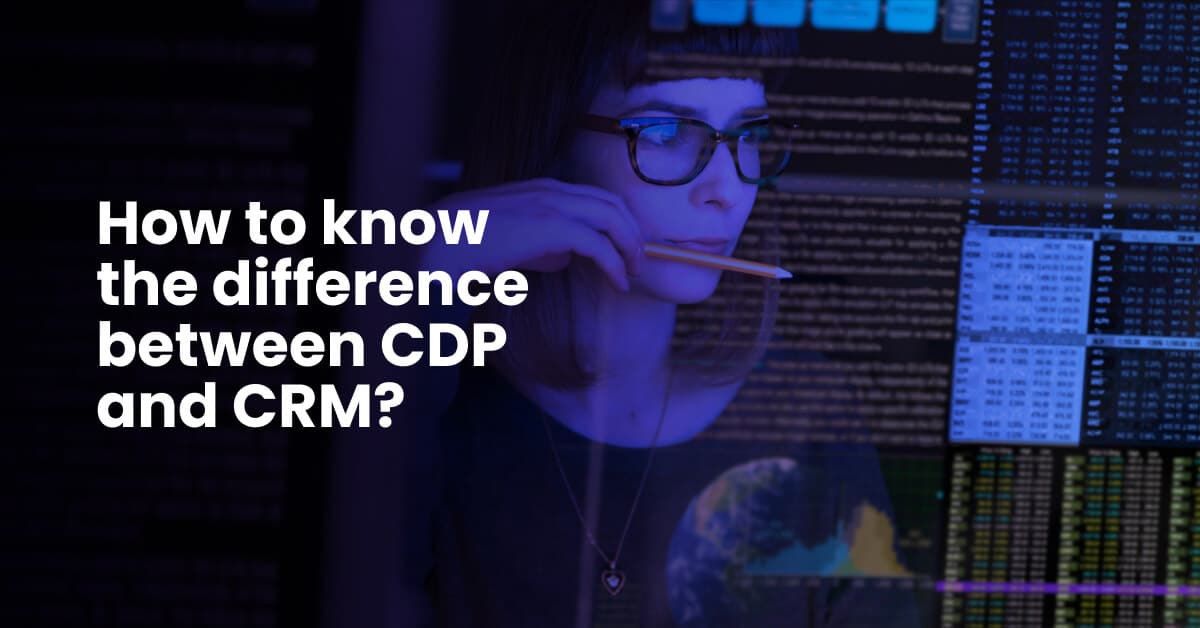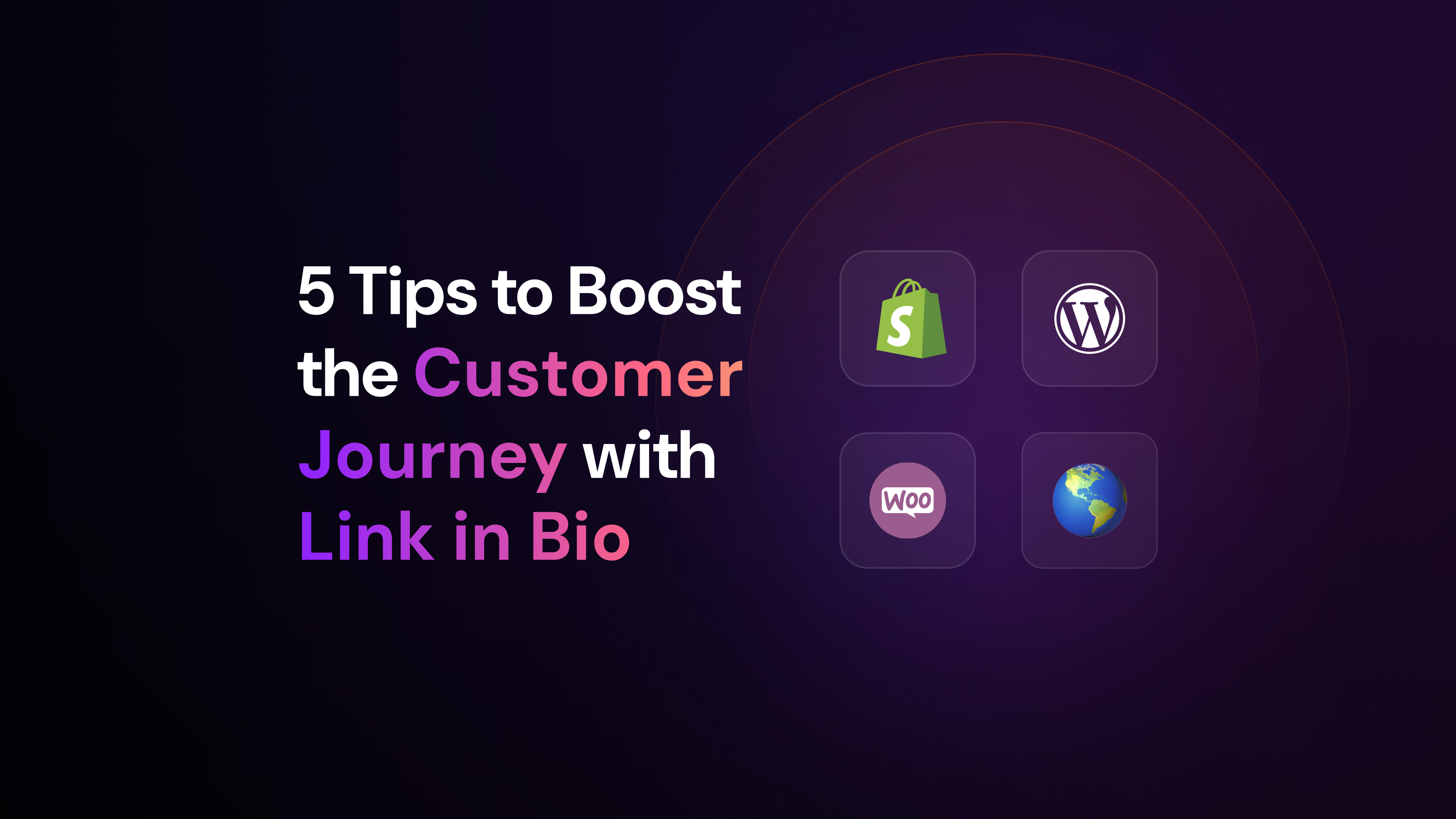Customer Data Platforms are still new in the market and they can be mistaken by other solutions that came before them. Here’s the difference between CDP and CRM.
The difference between CDP and CRM needs to be explained. Even though they both gather customer data, they work in distinct ways. While the CDP is a much more complete software, the CRM can still perform very well in many strategies.
Customer Relationship Management (CRM) and the Customer Data Platform (CDP) are both customer data-collection-related software. However, there are many differences between these two systems — from the type of data gathered to why they are used. For example, CRM was developed to assist sales representatives while CDP is much more focused on marketing teams.
Because CRM can be integrated into the CDP, that’s even one more reason they can be mistaken for one another. Nonetheless, the difference between CDP and CRM is there and it needs to be understood. Mainly for the reason of knowing what is the best solution for your company.
So, if you already know what your pain points are, you only need to understand what is a CDP, what is a CRM, and the difference between CDP and CRM — which is everything we’ll explain ahead.
#Subscribe and stay on top of news on our blog
What is a Customer Data Platform (CDP)?
A Customer Data Platform, commonly known as CDP, it’s a software that gathers, processes, and stores data. It’s a system that was created with the goal of helping marketing teams to be more successful in their strategies. Through a database created by the CDP, marketing professionals can have access to all information about a company’s clients and prospects.
These data can include characteristics such as:
- name and age;
- contact;
- demographic;
- time online;
- pages visited;
- products of interest;
- which social media they use;
- how many interactions they made with the company;
- purchase history.

This is just a general overview of what a CDP can do since there is still a lot more information it can collect. Even more, it’s a thorough platform as it unifies data from several sources, both online and offline. This way, if someone follows the company’s Instagram and then buys a product in a physical store, the software has the ability to recognize it’s the same person, organizing all data about him or her and avoiding data duplication.
Basically, the CDP consumes data from any available source to create its database. Some examples we can name consist of the company’s website, online store, social media, payment systems, and app.
Moreover, a CDP system will always be up-to-date since it works with real-time data collection. This means information begins to be processed and stored from the first contact with the brand. Even if the person doesn’t share personal information on the first visit, their online behavior is being analyzed.
That way, when they do decide to share personal and/or contact data, the system will be updated and unify all that information into a singular customer profile.
Something that’s worth mentioning too is that the data available on a CDP software has no lifetime limit like cookies do. A system like DMP, for instance, has up to 90 days of data storage because it only works with purchased cookies — you’ll understand more about this later on.
Also, a CDP will create unified customer profiles for clients with similar preferences and habits. These can be analyzed and used to create segmentation groups for highly personalized customer journeys. Of course, individual profiles can be used for the same reason.
Working with real and reliable data makes a huge difference in marketing strategy success. Still, other teams inside the company can also benefit from using a Customer Data Platform. For example, sales and product teams can have access to all the data without the need to have reunions and updates from the marketing sector.
Just like that, the whole company is able to work with efficiency to give the customer the best UX possible.
Customer Relationship Management (CRM): Definition and Advantages
Customer Relationship Management is a system developed to assist mainly sales teams. Yet, nowadays, it’s used by other sectors in a firm, like Human Resources and the supply chain.
Overall, what CRM does is gather customer data through online transactions. So, what makes it different from the CDP? Well, that is the fact it only analyzes personal data from known customers. That means it’s possible to check information like name, age, and contact, but not the number of visits made to the website or which pages were visited by each client.
The main role of Customer Relationship Management software includes:
Even more, it’s a platform that’s used in the B2B (business to business) field, where data allows us to analyze the sales pipeline and see where there are more chances to close a deal.
It’s a guaranteed way to understand more about the consumer and the context where they are before contacting them — which will help increase conversion rates. After all, when you know who you are talking to, customer service is more accurate and the client will have a more pleasant experience.
In spite of the difference between CDP and CRM, both systems perform their job in a way that is noticeable. Customer Relationship Management helps increase profitability and simplify sales processes. Likewise, since CRM is a source to feed the CDP as well, it makes marketing processes easier — this technology allows to make accurate decisions based on real data.
What is a Data Management Platform (DMP)?
It’s important to mention the Data Management Platform (DMP) because it is also a system commonly mistaken for CDP and CRM. In fact, there are similarities, but they are all different software and perform different functions.
In this case, DMP is a program that works with data collection and organization, but there is a big difference from the others: its database is formed by anonymous cookies.
These cookies are purchased data from external providers. That’s why they are anonymous — brands can’t collect and sell personal data. Because the customer decided to share their personal information with a brand, that doesn’t mean the brand can share it with any other company.
Even if they’re anonymous, these data are still a valuable resource to create target audiences and make promotions at large scale. Therefore, marketing teams are the ones who mainly use this platform. Besides, it provides professionals of the area enough support so they can create new segmentation groups to use in ads and overall campaigns. This way, boosts brand awareness and grows the company’s audience.
Also, one last detail to keep in mind about a DMP system: all data gathered can be processed and added to the Customer Data Platform.
What’s the Difference Between a Database and a CRM?
Based on everything that’s been said so far, it’s noticeable some differences between CDP and CRM. Then again, it’s important to show clearly what they are and clarify them a little better.
Application
First of all, Customer Relationship Management seeks to personalize and improve customer relationships. While CDP also has that at its core, it also focuses on how to ameliorate products and services. Thus, bringing a better overall customer experience.
Another factor to take into account is that CRM mainly analyzes sales pipelines looking to transform leads into customers. Though a Customer Data Platform does that as well, its priority is more about getting to know the consumer. Only then, the system do a public segmentation and help in creating personalized campaigns and publicity.
How Data is Collected
While CRM only gathers data of active consumers, CDP includes unknown prospect data too — so that when they decide to share their personal information with the company, the system will recognize who they are and put together all the information. Even more, a difference between CDP and CRM is the amount and type of data that can be collected by each platform.
At the rate Customer Relationship Management stores personal data, such as names, age, address, etc., the CDP knows a lot more — like the time each consumer spent on each page they accessed. Additionally, everything that is related to the brand is a source to increase the CDP’s database, from the company’s website to the payment systems used by the firm.
Customer Journey Tracking
If a client clicks an ad but decides to purchase in another moment, through another source, CRM doesn’t have the capability to connect that it was the same person who took those actions. However, that tracking becomes possible with the CDP.
As previously mentioned, Customer Relationship Management doesn’t gather offline data. So, if a customer interacts with the brand online, but buys on-site, the system can’t connect the dots. CDP, however, has the knowledge to understand and put together that information, following the entire journey someone makes to conclude a purchase.
Data Duplication
For the same reason CRM doesn’t track customer journeys, it ends up with data duplication. Since the system doesn’t have the intelligence to understand the person who clicked an ad and bought on-site as the same one, data ends up being repeated as if it were two separate persons. The same way, this happens if the customer interacts with an email and then on the website, among other cases.
Nonetheless, the CDP configuration enables data processing to avoid duplication. So, even if a customer identifies as Mary Jane Brown in one source and MJ Brown in another, that data will go into a singular customer profile.
IT Support
Even though CDP is a much more complex system than the CRM, it’s this second software that needs more IT support. From configuration to management, the Customer Relationship Management system needs the tech team through the entire process. Meanwhile, the CDP will probably need some support at the first configuration, but, after that, anyone with authorization can easily access the database.
#Subscribe and stay on top of news on our blog
CDP Benefits for Marketing Professionals
Many benefits can be implied along with the explanation about what is CDP. For instance, how easy it becomes to know your consumer and create the finest content possible. As a matter of fact, that is the main goal of acquiring a CDP solution.
As a part of the advantages, we can name:
- understanding who is the customer;
- knowing the pain points of the consumer;
- getting a complete database;
- increasing conversion rates;
- improving ROI;
- automation of data analysis;
- lower operational costs.
Currently, the purpose of a company lies much more in understanding who is their consumer than on working on products. Getting the ideal customer is even more important since that will reduce the need to constantly work on the product. Still, developing and perfecting a product or service occupies a high position on the priority list.
When we talk about pains and gains in marketing, the idea is that all clients have different pains that the company will have a solution for. This way, a CDP gives all the necessary data for marketing professionals to find out what is impacting the audience and in what way their product can be used to put an end to the problem.
From the information about the consumer, the team will be able to create exclusive content and advertising that are extremely directed to increase the chances of landing a conversion. To clarify, data about what a person likes and dislikes, where he or she lives, who they live with, where they seek information, what kind of content they pay attention to, amongst many other possibilities. The more you are able to discover, the better the result will be.
Overall, marketing by itself is already a way to increase conversion rates and return on investment. Still, a Customer Data Platform will intensify that factor by giving the most accurate and real data as you can get.
In addition, it won’t be necessary to have a specific professional or group to analyze data into what’s useful or not. By using a CDP solution, that will already be covered — therefore, reducing operational costs and making the process automatized and faster.
How to Strategically Use CDP and CRM
Even when we consider the difference between CDP and CRM, a company can still take advantage of the benefits of both software. Everything that’s processed and stored in the CRM and in the CDP has an important role in two moments.
First, to help small businesses grow. Then, to help companies that already have an established audience and are looking for a large-scale solution to work on digital marketing strategies.
Through marketing strategies, it becomes possible to recognize an issue and present a solution. And with a CRM and CDP database, marketing professionals can identify exactly who the target audience is.
With all the data available, from purchase history to offline habits, the company controls target audience segmentation, creates an automation flow for emails and ads, and analyzes performance metrics. Thus, directing content with precision.
After analyzing the difference between CDP and CRM, have you decided on acquiring a solution like this to your company? Arena will give you the best product to work with data collection, customer experience, and audience engagement.
Plus, our team is always available to answer all of your questions. So, stop delaying the success of your business and talk to one of our consultants right away!



